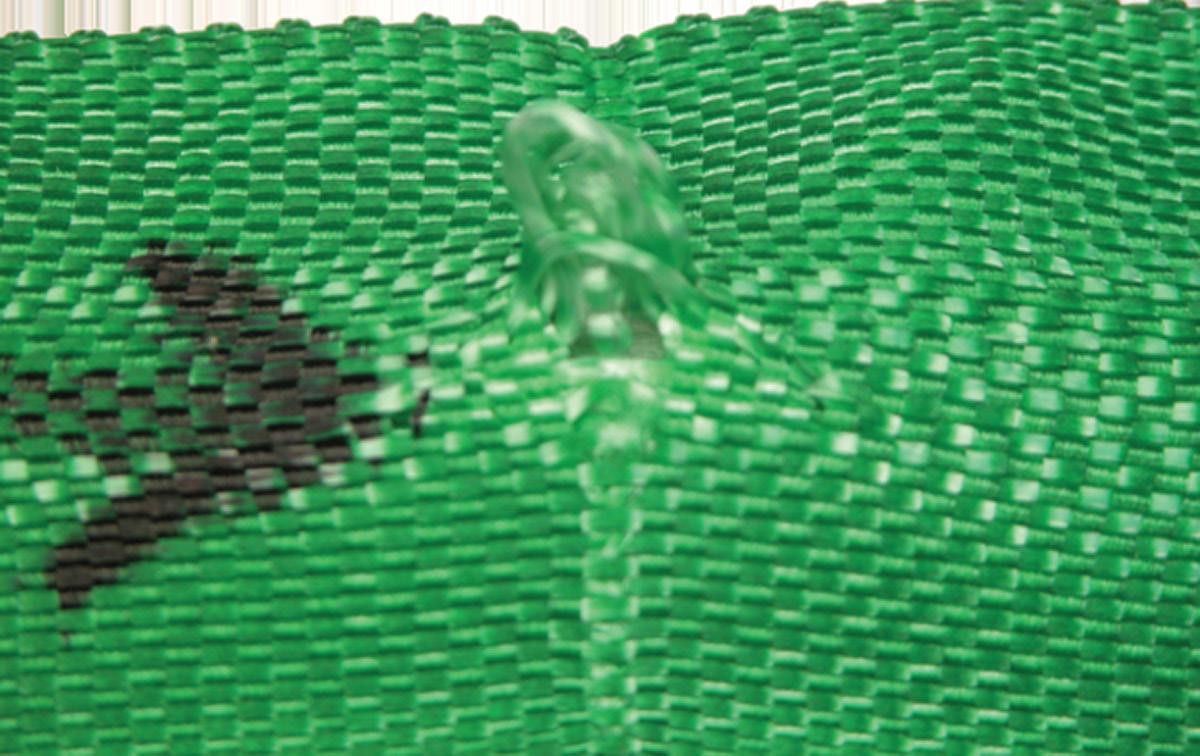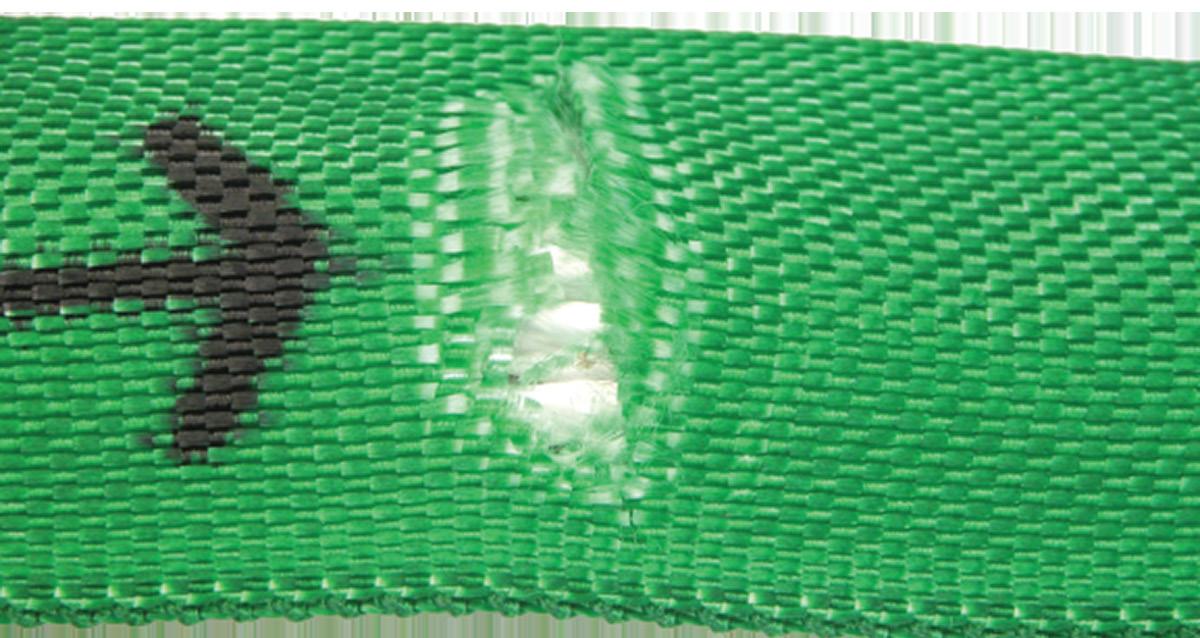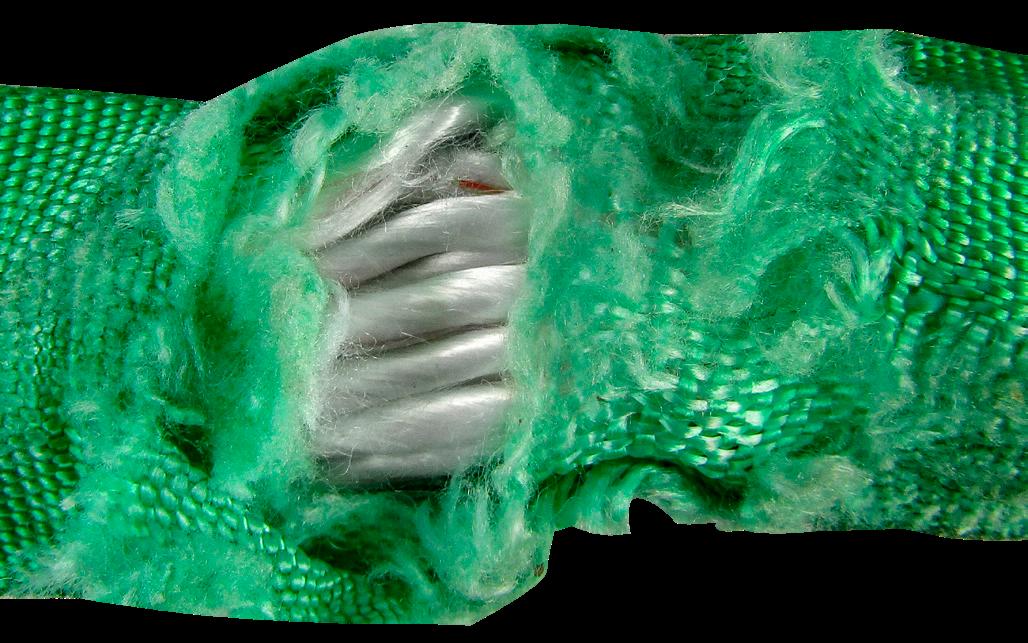
1 minute read
ROUNDSLING INSPECTION CRITERIA
from 2024 Catalog
by Lift-All
The following photos illustrate some of the damage that occurs and indicates the sling must be taken out of service. For inspection frequency requirements, see the General Information section in this catalog.
Cuts To The Cover
Advertisement
WHAT TO LOOK FOR: Broken fibers of equal length indicate that the sling has been cut. When core yarns are exposed, the damage to the yarns cannot be determined. Therefore, the sling must be taken out of service.
TO PREVENT: Always protect synthetic slings from being cut by using cut protection. See Sling Protection section in this catalog.
Abrasive Wear
WHAT TO LOOK FOR: Areas of the sling that look and feel fuzzy indicate that the fibers have been broken by contact and movement against a rough surface. Affected areas are usually discolored. Inspect sling and remove from service if core yarn is exposed.
TO PREVENT: Never drag slings along the ground. Never pull slings from under loads that are resting on the sling. Use wear protection between slings and rough surface loads. See Sling Protection section in this catalog.
HOLES, SNAGS, or PULLS
WHAT TO LOOK FOR: Punctures or areas where fibers stand out from the rest of the sling surface. Inspect sling and remove from service if core yarn is exposed.

TO PREVENT: Avoid sling contact with protrusions, both during lifts and while transporting or storing. See Sling Protection section in this catalog.











